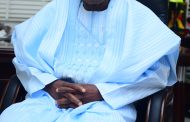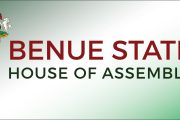By Greg Mills
Plans are afoot to extract more value and better integrate fishing into the Mauritanian economy. Doing so will require a break from the past – including making considerable investment in infrastructure, implanting a new set of policies, and ensuring a new way of doing things. The sector is a key test for a country which could, if it walks its own talk, become a regional exemplar.

Noauakchott’s fish market at the Plage des Pecheurs (Place of the Fishermen) is a place of great energy. Teams of men, some in oilskins, most barefoot, heave colourfully decorated pirogues up the beach. Others pack outboard engines and hand-knotted nets. Boys and girls sell drinks and food, and donkey carts lug bags and boxes of fish. The concrete tables in the roofed marketplace are piled with fish, the floor littered with discarded heads and entrails, while traders seal cooler boxes for the refrigerated trucks parked outside.
Hundreds of these traditional, open fishing boats line the shore. The seas off Mauritania’s 754km coastline contain some of the world’s richest fishing grounds, generating a quarter of the country’s exports. But the industry is under pressure. As much as 1.2-million tonnes is caught in Mauritanian waters annually, though fishermen complain that they have to go as far as 30kms offshore to make their catch.




Photos: Plage des Pecheurs (Greg Mills)
In July 2015 the European Union renewed a 20-year agreement with Mauritania allowing EU vessels to trawl up to 281,500 tonnes annually in return for commercial payment and an aid package to support local fishing and environmental controls. Commercial trawlers can net up to 250 tonnes of fish daily; a pirogue might do five tonnes a year. Chinese, Russian and South Korean trawlers, like the Europeans, are drawn to the area by increasing consumer demand and declining stocks back home. It is estimated that more than a third of fish caught off West Africa is illegal, unreported or unregulated, losing $1.3-billion in annual income.
Plans are afoot to extract more value and better integrate fishing into the Mauritanian economy. Doing so will require a break from the past – including making considerable investment in infrastructure, implanting a new set of policies, and ensuring a new way of doing things.
The sector is a key test for a country which could, if it walks its own talk, become a regional exemplar.
Nouakchott – the “place of winds” – was created afresh as the capital on independence from France in 1960, when just 10,000 frequented what was little more than a fishing village. Now home to perhaps 1.5-million people, or a third of Mauritania’s population, it is pockmarked with grey concrete residences under construction. There are no physical city limits to the urban spread across the apparently endless expanse. “If you have a thing about sand,” observes one diplomat, “you should not be here.”

Photo: Nouakchott. (Greg Mills)
Sprawl and poverty place different but extreme strains on infrastructure. The road to the mine at Akjoujt strikes out 250km northeast from the capital Nouakchott towards the border with the Western Sahara. Its tough territory, more Mars, it seems, than Mauritania.


Photo: The road to the mine at Akjoujt. (Greg Mills)
A short stretch at the start is built to link the new international airport with the capital, the four lanes lit by solar-powered lamps. On the city limits the route is a dodgem of donkey carts, petrol tankers, trucks, camels, and suicidal Mauritanians, lined with a scruffy salad of plastic rubbish, old tyres, desert shrubs, vehicle detritus, the occasional mosque and the ubiquitous khaima – tents around which goats scuffle and out of which occasionally a shepherd appears in a colourful boubou, veiled in an equally bright chehce headdress. Red sand from rolling dunes spills into the road at various points, whipping across it at others in a ghostly tarmac mist, adding to the challenge.
And then, quickly, there is virtually nothing. Just a black strip, a string through the endless sand, punctuated by an occasional khaima, solar powered cellphone towers, grazing camels and busy goats, sedentary police roadblocks, and an odd roadside water bladder. One of the 10 most sparsely populated countries in the world, Mauritania’s human density is 3.5 people per km2 across its million or so square kilometres, putting it alongside Botswana (3.48), Iceland (3.24), Namibia (2.56) and neighbouring Western Sahara (2.25). The per capita cost of delivering infrastructure over this vast territory is high.




Photo: The copper-gold mine at Akjoukt. Temperatures peak at over 60 Celsius in summer in the pit. (Greg Mills)
Once on the margins of the world – confused even by couriers with tropical Mauritius on the other side of the continent – Mauritania has benefited from the global mining boom, given its large stores of iron ore and copper. Annual foreign direct investment leapt from $100-million in 2006 to $1.5-billion in 2012, 90% of which was in mining. It enjoyed five years of annual growth of 5.4% from 2010.
Yet it remains one of the poorest countries in the world, with a per capita GDP of $1,300, ranking 156th among the 188 countries on the United Nations Human Development Index. Although its population is growing slowly by regional standards, 60% is under the age of 25, while literacy is just 52%. Its infrastructure is fragile – with just one-fifth of the population having access to electricity, and with a chronic national water shortage. Mauritania imports as much as 90% of its domestic food requirements.
Macro-economic troubles have surfaced as the commodity super-cycle has cooled. With a 10% drop in mining production in 2015, GDP growth fell to 3%, from 6.4% the previous year. And government debt rose to over 90% of GDP, forcing the devaluation of the Ouguiya.
A troubled political history has not helped, with a dozen coups or attempts since independence, the first in 1978 ending the rule of independence leader Moktar Dadda. A military junta ruled until 1992, when the first multi-party elections were held. Another bloodless coup in August 2005 oversaw a transition to democracy. Although Sidi Ould Cheikh Abdellahi was inaugurated in April 2007 as the country’s first free and fairly elected president, his term ended abruptly in August 2008 with a putsch led by General Mohamed Ould Abdel Aziz. The general was subsequently elected president in July 2009 and re-elected to a second, and apparently final term in 2014 with 82% of the vote, both events however being boycotted by various opposition movements.
Although there have been significant reforms in media freedom, for example, Mauritania’s political system remains classified “not free” by Freedom House. The differences appear deeper than democracy. There remain ethnic and racial tensions among three major groups: the Arabic-speaking descendants of slaves (Haratines), around 40% of the population, Arabic-speaking so-called “White Moors” (Bidhan), some 30%, and the remainder from those Afro-Mauritanians originating from the Senegal River valley to the south. With Bidhan Mauritanians occupying most elite positions, in government and business, there is a tense public debate about slavery and its effects.
Despite such differences, and adverse conditions, there is a strong sense of national attachment and resourcefulness. “We still think like nomads,” explains a veteran local politician, “to our cost. We dump rubbish where we choose, and have no permanence. It reflects in the way in which we drive.” Mauritania is one of the few countries where you will routinely be overtaken while waiting at a red traffic light, a place where old Peugeots and battered Mercedes taxis come to die. “But being nomads,” he smiles, “also means we can survive the toughest conditions.”
Still Mauritania’s image outside remains tainted. This is compounded by challenges in doing business. It is ranked 168 out of 189 countries in the World Bank’s 2016 Ease of Doing Business indicators, for example. Investors say they are hampered by erratic tax practices and an inefficient and corrupt legal system.
None of this, however, is lost on government. By the admission of the Prime Minister’s Chief of Staff, Mohamed Djibril, dealing with corruption and ensuring inclusive government are items two and three on the government’s top-three priorities, the first being to “develop the private sector without which it is impossible to create jobs”.
There are deeper challenges. Ahmed Mahmoud Dahan, a former Minister of Foreign Affairs and, later, Islamic Affairs, and now the head of the Institute for Strategic Studies in Nouakchott, says the state was “established by the colonial authorities principally for extraction. After independence, it was replaced by a state to serve the executive. As a result,” he notes, “power is all important as the state is virtually the sole source of jobs.” Predictably, in the government, until now “there has been little incentive for change”.
This view is echoed by the Prime Minister, Yahya Ould Hademine. With a background in the state iron-ore mining company SNIM, he, too, has clear ideas of what needs to be done. Appointed in August 2014, the Canadian educated technocrat identifies “the first constraint in that Mauritania was not a state before independence. We have had to construct institutions and educate our people to enter modernity. Now, after 50 years, we have reached the level of countries like Senegal, at least, which has been doing this for hundreds of years.” This situation was made more difficult by “a big 20-year drought in the 1970s, which seriously affected our livestock-based society, and increased the rate of urbanization. But then we had to provide new infrastructure in the cities – potable water, roads, services, policing – as well as attempt to deliver,” he notes, “over a large territory.”
To these constraints he says have to be added “increasing investment, improving the legal system and justice.” And this has been complicated by the rise of “violent extremism”.
Now the government “has identified three fields for growth and jobs: fishing, agriculture and livestock. We aim to add more value to fishing. Whereas Morocco has just half of our production, it has 500,000 workers. Senegal produces one-quarter of what we do, but has 400,000. We have just 36,000. The Free Zone initiative in the [northern port of] Nouadh’bou aims to change this, as will be the development in smaller ports along the coast.” The government plans to spend as much as $1-billion on the fishing sector alone.
It’s slightly more complicated, however, given that the local fishing industry is dominated by Senegalese. Many menial jobs go to foreigners, mostly from West Africa. “In agriculture,” says the Prime Minister, “the plan is to prepare the land to the south along the Senegal River, where we have hundreds of thousands of hectares available. Already we produce 80% of our rice requirement from this area.”
A focus on these areas would build on the success of the mining sector, he says. Mauritania is the second largest iron ore producer in Africa, and aspires to be in the top five global exporters of iron ore by 2025 with an annual production of 40-million tonnes. There are also investors operating copper and gold mines, including Mauritanian Copper Mines, at Akjoujt. With an injection of finance and technology by owners First Quantum, the mine, originally started by Anglo American in the 1960s, produces around 40,000 tonnes of copper and 60,000 ounces of gold annually.
What about the to-and-fro steps regarding democracy? “You have to understand that Mauritania is not exactly like all African countries,” says Prime Minister Hademine. “Our population has a long cultural history and in the Middle Ages they conquered Spain and Morocco, so convincing them of new rules of governance is not that is as other African populations who learnt how to read with the coming of the colonial power. Our path is thus one of small steps.”
These steps include the debate around inclusive government, which some see as a proxy, however, for extending the president’s rule to a third term. With a proactive leadership role in the African Union and the Arab League, the government is surprisingly defensive about its international engagement. Even though it has made a long-term regional commitment to fighting violent extremism, France is routinely fingered as the culprit when things go awry, as is Israel since Nouakchott cut ties with Jerusalem in 2009. And there is suspicion towards foreign workers and investors in taking jobs away from Mauritanians, hence the imposition of schedules to work expats out of positions that locals might fill, sometimes a balancing act between local empowerment and appeasement on the one hand and continued competitiveness on the other.
Yet, ironically, Mauritania’s greatest strength is in its relationship with the international community as a stand-out country in the Sahel, given its relative security. This asset is highlighted by the projected increase in the region’s population from 135-million to 330-million by 2050 and an estimated 670-million in 2100.
Together with water scarcity, populist temptations including Islam, and fictions of local statehood across an area of more than six million km2, the Sahel scene is otherwise set for chronic failure. Throw in climate change and soil degradation (already estimated by the UN’s Food and Agriculture Organisation as affecting over 80% of the Sahel) and a predominantly young population one should expect migration, both south and north, on a grand scale.
Until now the role of the international community has been to manage the tactical extremes, and trying to bolster state and especially military capacity in places where there are fundamental issues of control of society and territory at stake. This approach is likely only to stave off rather than solve these problems especially where it’s not always clear who the government and the good guys are.
There is a wider role for those Sahel states that might answer these questions. As Ambassador Dahan observes, “The world speaks about North Africa and sub-Saharan Africa. But there is a big bit of the continent between the two, stretching from Mauritania in the west to Sudan in the east. It’s sparsely populated and big.
“Does this region, the Sahel, divide these two worlds,” he asks, “or does it link them?” The road from Nouakchott to Akjoujt was rebuilt in 2012 by Mauritanian Copper Mines at a cost of $25-million. It was in the company’s self-interest to do so, moving an average of six 30 tonne fuel tankers and fifteen 50-tonne copper concentrate trucks daily down the route. MCM has a wider role still, pumping water 120kms away from an aquifer at Benn’chahab. In the heat of summer, with temperatures at over 50 Celsius, the mine gets less than 75% of the water which originally entered the pipe, the rest being diverted to the local town and various populations and camels en route. In the town of Akjoujt, 360 houses are owned by the mine, which has additionally set up training programmes for youth, women, farmers, and school children.
This adds a premium, of expectation as much as expense, to the mine’s activities, already burdened by distance and the cost of services. The cost of transport, for example, to the port at Nouakchott is $16 per tonne, plus $10 in handling charges and $35 in shipping to China. To this has to be added processing costs, and explains why plans to extract iron ore from the discarded copper-gold concentrate at MCM had to be put on hold when iron prices slipped below $60 per tonne.

Photo: The author with the Prime Minister Hademine and Ambassador Dahane.
Reducing inequalities and tackling wealth redistribution, notes the World Bank, “are key challenges that Mauritania can overcome, provided that it continues its commitment to good governance, particularly in the mining sector and in the supervision of state enterprises”. Indeed, the partnership epitomised by the mine at Akjoujt answers some of the development questions posed by Mauritania – and the Sahel. To do more, and ensure both its own stability and provide an example to its region, the government in Nouakchott will have to stay true to its rhetoric to encourage the private sector. DM
Dr Mills heads the Johannesburg-based Brenthurst Foundation, and has been researching in Mauritania for a new book, ‘Making Africa Work’.
This piece has been culled from Daily Maverick, Oct. 19th, 2016 with minor adjustments in graphics – Editor
.



























